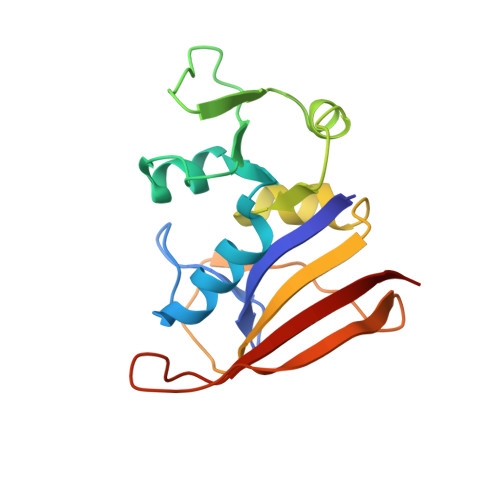Protein design algorithms predict viable resistance to an experimental antifolate.
Reeve, S.M., Gainza, P., Frey, K.M., Georgiev, I., Donald, B.R., Anderson, A.C.(2015) Proc Natl Acad Sci U S A 112: 749-754
- PubMed: 25552560
- DOI: https://doi.org/10.1073/pnas.1411548112
- Primary Citation of Related Structures:
4Q67, 4Q6A - PubMed Abstract:
Methods to accurately predict potential drug target mutations in response to early-stage leads could drive the design of more resilient first generation drug candidates. In this study, a structure-based protein design algorithm (K* in the OSPREY suite) was used to prospectively identify single-nucleotide polymorphisms that confer resistance to an experimental inhibitor effective against dihydrofolate reductase (DHFR) from Staphylococcus aureus. Four of the top-ranked mutations in DHFR were found to be catalytically competent and resistant to the inhibitor. Selection of resistant bacteria in vitro reveals that two of the predicted mutations arise in the background of a compensatory mutation. Using enzyme kinetics, microbiology, and crystal structures of the complexes, we determined the fitness of the mutant enzymes and strains, the structural basis of resistance, and the compensatory relationship of the mutations. To our knowledge, this work illustrates the first application of protein design algorithms to prospectively predict viable resistance mutations that arise in bacteria under antibiotic pressure.
Organizational Affiliation:
Department of Pharmaceutical Sciences, University of Connecticut, Storrs, CT 06269; and.















